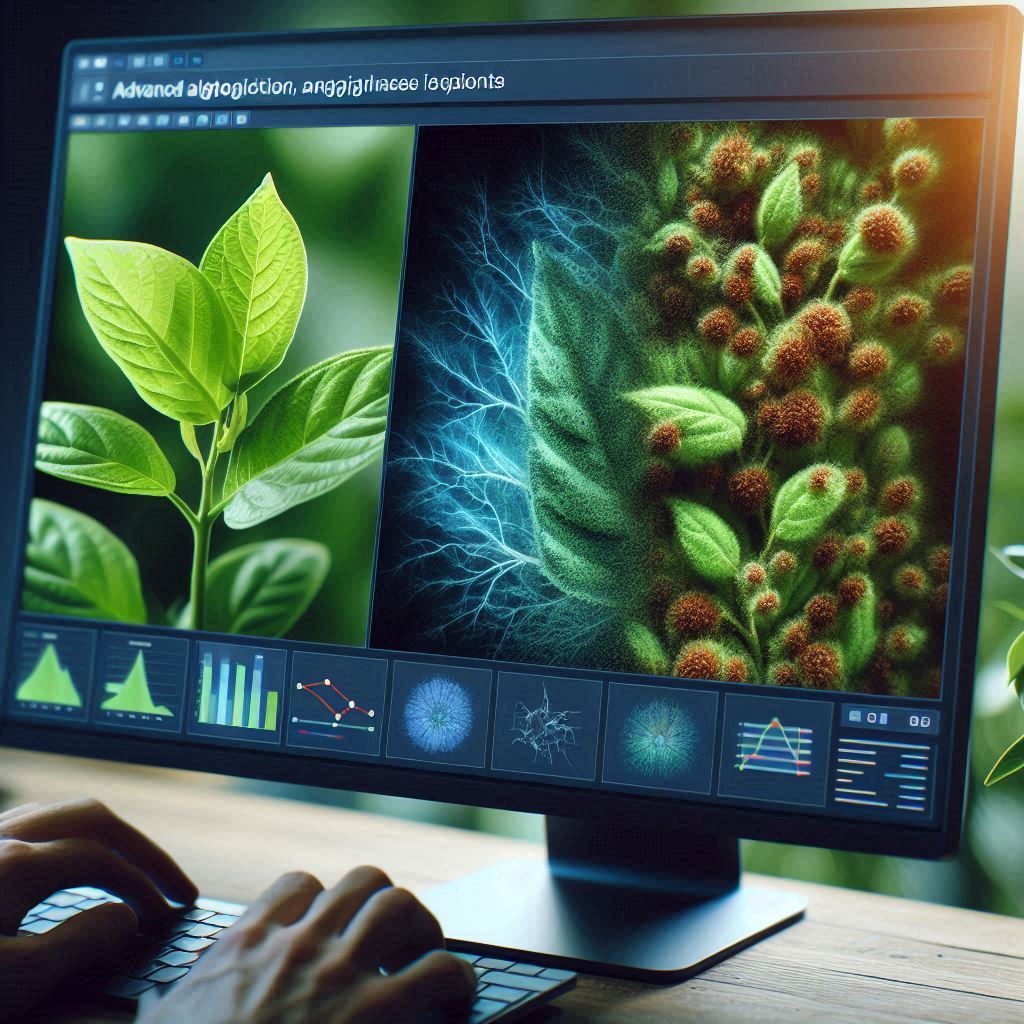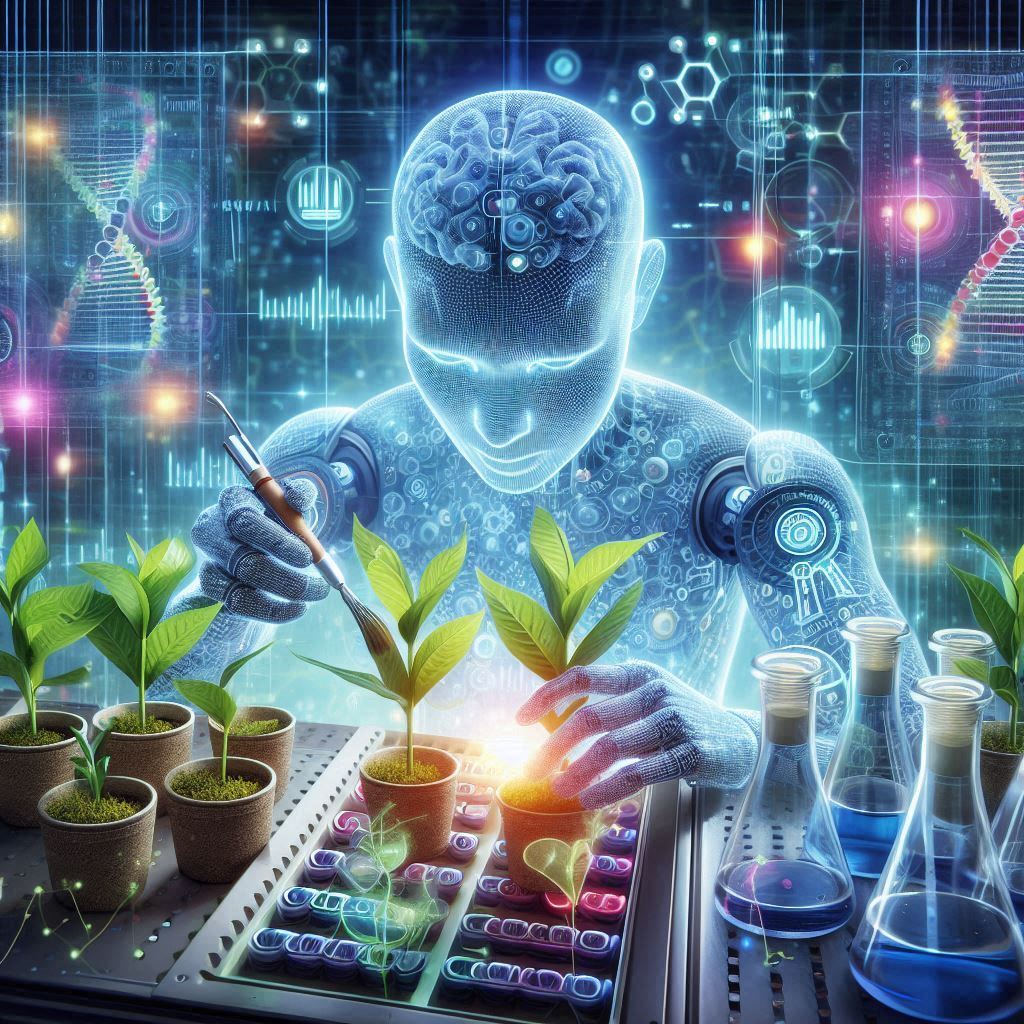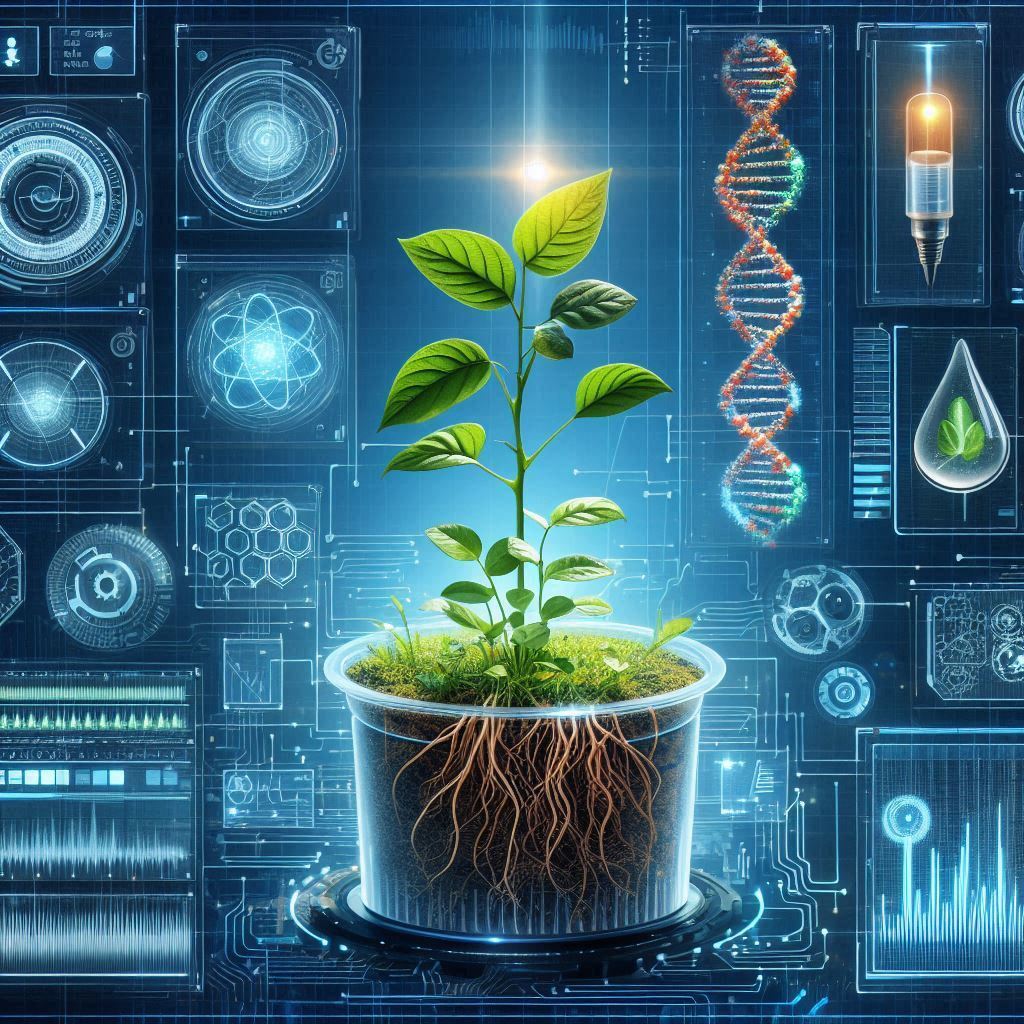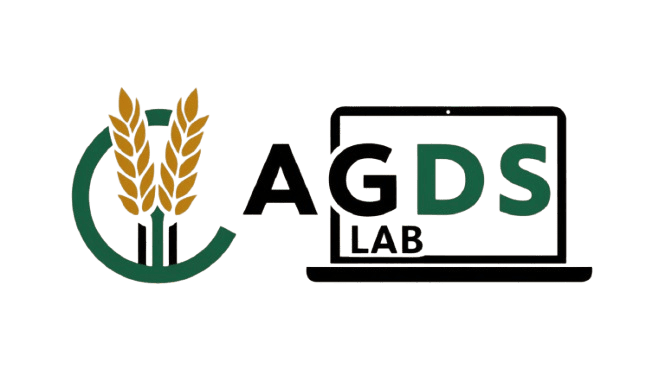Welcome to
Agriculture Data Science Lab
(AgDS-lab)
</>Design | Prototype | Deploy </>
Learn the techniques of AI and Machine Learning to integrate them in your research and ideation to build solutions
Core Areas of Training
## Simulation & Digital Twin Technology
Develop AI-driven crop growth simulations and digital twin models to predict climate impact and farm efficiency.
Python
## Optimization & Precision Agriculture
Use AI and ML to optimize resource allocation, irrigation, fertilization, and pest control for higher yield efficiency.
Python/R
## Forecasting & Predictive Analytics
Leverage AI for market price forecasting, yield prediction, and climate impact assessment to aid smart decision-making.
Python/R

## Adaptive Learning & Autonomous Systems
Train AI models to self-learn from real-time agricultural data for dynamic decision-making and crop management.
Python
## MLOps & Scalable AI Deployment
Implement MLOps for seamless AI model deployment, automation, and monitoring in large-scale agricultural applications.
Python, Shell Scripting
## AI for Farm Automation & Robotics
Integrate AI-powered drones, robotics, and IoT-based automation for efficient farm monitoring, harvesting, and pest management.
Python, C++
#Modue No: 1
Computer Vision
This module ensures a practical, hands-on approach to leveraging AI-driven computer vision in agriculture
#1. Introduction to Computer Vision in Agriculture
Understand the fundamentals of computer vision and its applications in crop monitoring, soil analysis, and automation.
Online
#2. Image Processing & Feature Extraction
Learn image enhancement, filtering, segmentation, and feature extraction for analyzing soil quality, crop health, and yield.
WebCast
#3. Object Detection & Classification
Implement YOLO, Faster R-CNN, and SSD to detect plant species, pests, diseases, and classify crop conditions.
WebCast

#4. Deep Learning for Agricultural Vision
Train CNNs, ResNet, and EfficientNet for crop disease detection, automated grading, and weed identification.
WebCast
#5. AI-Powered Drones & Precision Farming
Use drones with AI-driven computer vision for crop scouting, irrigation assessment, and farm automation.
WebCast
#6. Deployment & Real-World Integration
Deploy models with TensorFlow Serving, ONNX, and cloud platforms for real-time decision-making in smart farming.
WebCast
#Module No: 2
Natural Language Processing
This module equips participants with practical NLP skills to transform agriculture data into actionable intelligence.
#1. Introduction to NLP in Agriculture
Understand NLP basics and its role in automated advisory systems, policy analysis, and farmer interaction platforms.
Online
#2. Text Processing & Feature Engineering
Learn tokenization, stemming, lemmatization, stop-word removal, and vectorization for processing agricultural research papers and reports.
WebCast
#3. Sentiment Analysis & Opinion Mining
Use NLP techniques to analyze farmer feedback, market trends, and agricultural policy discussions from social media and surveys.
WebCast

#4. Chatbots & Automated Advisory Systems
Develop AI-powered chatbots for farmer queries, voice assistants, and advisory tools using Rasa, Dialogflow, and BERT.
WebCast
#5. Information Extraction & Knowledge Graphs
Use NLP for extracting insights from agriculture datasets, research articles, and government policies using NER and ontologies.
WebCast
#6. Deployment & Real-World Applications
Deploy NLP models with FastAPI, Hugging Face, and cloud services for real-time decision-making in smart agriculture.
WebCast
#Module No: 3
Machine Learning
This structured training provides practical, hands-on ML skills for solving real-world agricultural challenges.
#1. Introduction to Machine Learning in Agriculture
Understand ML fundamentals and its applications in crop prediction, precision farming, and soil health analysis.
Online
#2. Supervised & Unsupervised Learning Techniques
Learn regression, classification, clustering, and dimensionality reduction for yield forecasting and soil classification.
WebCast
#3. Time Series Analysis & Forecasting
Use ML models like ARIMA, LSTMs, and XGBoost for predicting weather patterns, crop yields, and market prices.
WebCast

#4. Anomaly Detection & Disease Prediction
Apply ML algorithms for early detection of plant diseases, pest infestations, and farm anomalies.
WebCast
#5. Reinforcement Learning for Precision Farming
Train AI models for adaptive irrigation, autonomous tractors, and smart pest control using reinforcement learning.
WebCast
#6. Deployment & MLOps in Agriculture
Deploy ML models using Docker, Kubernetes, and cloud-based MLOps tools for real-time farm analytics.
WebCast
#Module No: 4
Deep Learning
This module provides a hands-on approach to deep learning, transforming agriculture through AI-powered solutions.
#1. Introduction to Deep Learning in Agriculture
Understand deep learning fundamentals and its role in crop classification, disease detection, and precision farming.
Online
#2. Convolutional Neural Networks (CNNs) for Image Analysis
Use CNNs like ResNet, VGG, and EfficientNet for plant disease identification, weed detection, and yield estimation.
WebCast
#3. Recurrent Neural Networks (RNNs) & LSTMs for Forecasting
Implement RNNs and LSTMs for weather prediction, crop yield forecasting, and market trend analysis.
WebCast

#4. Generative Models & Synthetic Data Creation
Leverage GANs and VAEs for creating synthetic crop images, augmenting datasets, and simulating climate impacts.
WebCast
#5.Attention Mechanisms & Transformers for NLP
Apply transformer models like BERT and GPT for automated advisory systems, chatbot development, and policy analysis.
WebCast
#6. Deployment & Optimization of Deep Learning Models
Optimize and deploy deep learning models using TensorFlow, PyTorch, ONNX, and cloud-based AI services for real-time applications.
WebCast
#Module No: 5
Generative Artificial Intelligence
This module offers a hands-on approach to Generative AI, empowering innovation in agricultural data science.
#1. Introduction to Generative AI in Agriculture
Understand the fundamentals of Generative AI and its role in synthetic data generation, simulation, and automation.
Online
#2. Synthetic Data Generation for Precision Farming
Use GANs and VAEs to create synthetic crop images, soil data, and weather scenarios for training AI models..
WebCast
#3. AI-Driven Crop Simulation & Climate Impact Modeling
Leverage generative models to simulate crop growth patterns, predict climate effects, and optimize resource allocation.
WebCast

#4. Language Models for Automated Advisory & Policy Insights
Train transformer models like GPT, BERT, and T5 for farmer advisory chatbots, document summarization, and policy analysis.
WebCast
#5. Image & Video Generation for Agricultural Research
Use AI to generate enhanced satellite images, drone footage, and plant disease progression simulations.
WebCast
#6. Deployment & Ethical Considerations in Generative AI
Deploy generative AI solutions with Hugging Face, TensorFlow, and cloud services, ensuring ethical and responsible AI practices.
